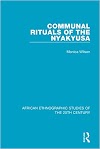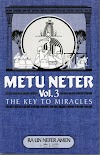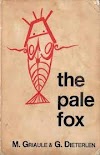The Egyptian concept of God is based on recognizing the multiple attributes of the Divine. The book details more than 80 divinities (gods/goddesses), how they act and interact to maintain the universe, and how they operate in the human being—As Above so Below, and As Below so Above.This Expanded Version of the book consists of two Parts with a total of 12 Chapters.Part I : The All Who Are THE ONE consists of seven chapters 1 through 7, as follows:Chapter 1: The One is ALL explains that far from being a primitive, polytheistic form, the Egyptians' ideology is the highest expression of monotheistic mysticism.Chapter 2: The Divine Energies of The Creation Cycle Chapter 3: Manifestation of Neteru in The Orderly Creation Process Chapter 4: Understanding Names, Epithets & Titles Chapter 5: Narration of Their Manifestations explains how the cosmological knowledge of Ancient Egypt was expressed in a story form.Chapter 6: Common Misrepresentations of the Divinities in Egypt Chapter 7: Man and The Divine Forces covers man's place in the universal order; man as the image of the universe; etcPart II : The Roles of Most Recognized Neteru (gods/goddesses) consists of five chapters 8 through 12, as follows:Chapter 8: Mystical Pictorial Depictions covers pictorial symbolism of the Nneteru; and how do Egyptian depictions reflect metaphysical concepts through the use of human figuration, animal symbolism, accessories, emblems, color,etc as well as various action formsChapter 9: Most Common Animals and Birds Forms Neteru covers the metaphysical significance of several animal images such as that of the ass, baboon, beetle, Bennu/Benben, bulls, cat, cows [Mehet-Uret (Mehurt, Methyer); Hesat, Hathor], crocodile, dog, egg, falcon, feather, fish, frog, goose, hare, heron, hippopotamus, horse, ibis, lions [lion, lioness & twin-lions(Aker)], Phoenix, rams, serpents, stork, vulture, and winged sun.Chapter 10: Most Common Male & Androgynous Human Forms Divinities covers the metaphysical significance of several male and androgynous human form images such as:Amon(Amen, Amun), Anubis (Anbu,Ubuat ,Web-wawet), Apis(Epaphus,Hapis), Aton (Adon), Atum (Atem,Atom, Atam),Bes, Geb(Seb, Keb), Hapi (Hepr),Herishef (Harsaphis, Arshaphes, Arsaphes), Horus (Heru) --[also Hor-Sa-Auset,/ Horsiesis (or Harsiesis),Heru-p-Khart / Hor-Pa-Khred / Harpocrates,Horus Behdety /Apollo and Heru-ur,/Haroeris/Harueris], Hor.Akhti/Horachti, Khepri (Khepera), Khnum, Khonsu(Khons), Min(Menu, Amsi, Kamutef), Nefertum --[also, The Triad Ptah-Sokaris-Nefertum],Nun/Nu/Ny, Osiris (Ausar, Usire, Asar), Ptah (Phtas, Vulcan), Re (Ra), Re Hor akhti (Rahorakhty), Reshpu(Reshef, Reseph), Sebek , (Sobek, Suchos), Seth(Set, Sutekh, Typhon), Sokaris (Sokar,Sakar, Seqr ), Shu, and Thoth[Tehuti,Hermes, Mercury]Chapter 11: Most Common Female Human Forms Divinities covers the metaphysical significance of several female human form images such as: Isis (Auset,Ast)-- The divine female Principle/Principal, Anat, Bast (Bastet, Oubastis), Heket(Heqet), Hathor (Het-Hor, Het-Heru,Venus, Aphrodite) --[also- Mehet-Uret (Mehurt, Methyer)- Heru-sekha- Hesat - Merit- Tree Netrt(goddess) - Astrate/ Asera / Serah / Sarah- Notre Dame], Kadesh (Qadesh), Maat(Mayet), Merit, Mut, Nephthys (Nebt-het), Neith (Net), Nut, Satis (Satet), Sekhmet(Sekh-Mut, Sakhmet,Petesachmis), Selkis(Serket,Selkit,Serqet), Seshat(Safkhet, Sesat, Seshet, Sesheta, Seshata), Taurt(Taweret, Thoeris, Toeris), and Tefnut,Chapter 12: The Archetypal Synergies covers the complex and shifting array ofrelationships between the divine energies; and how such synergies are being manifested in various associations such as dualities, trinities, octads and Enneads.














0 Comments